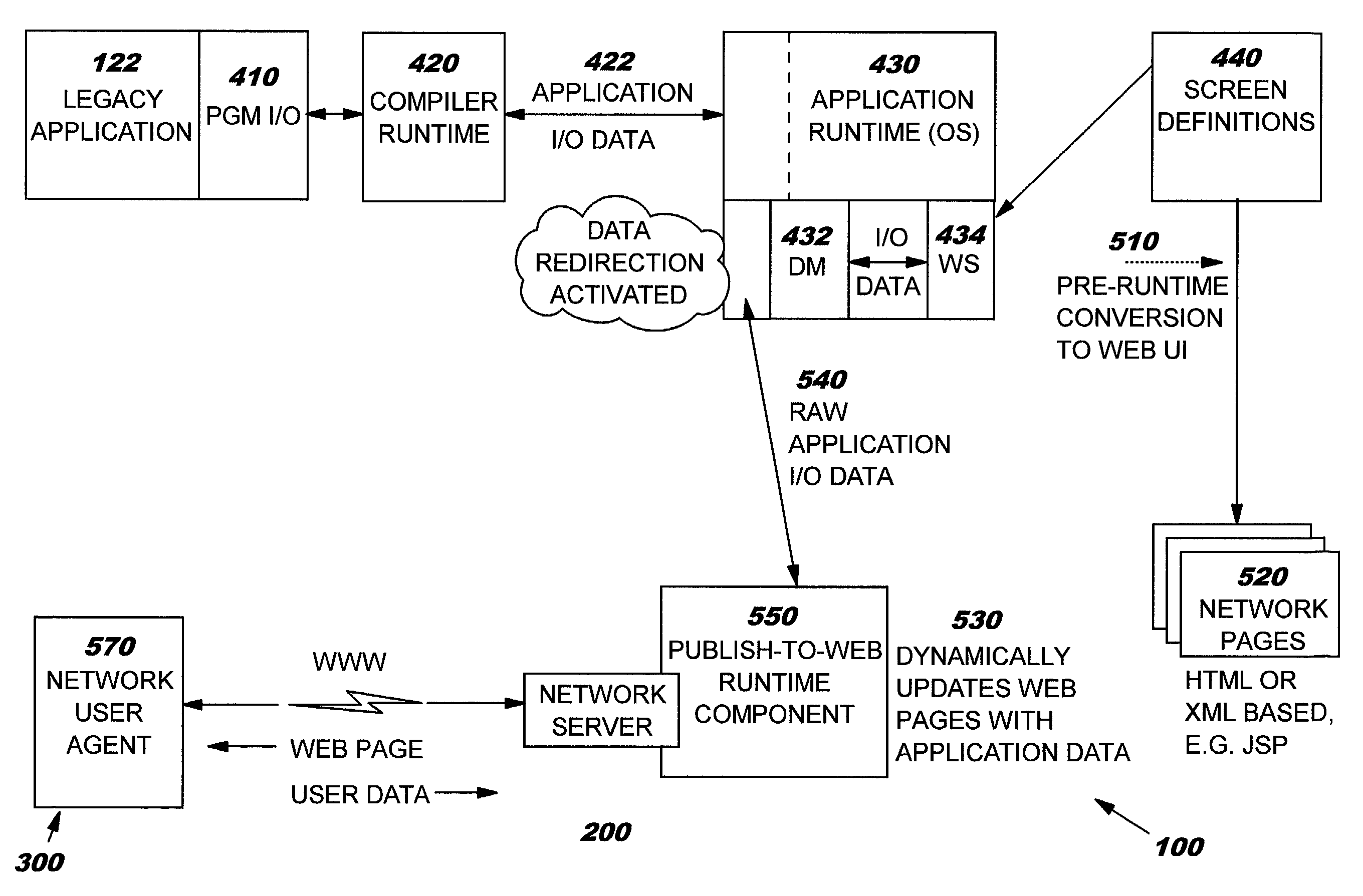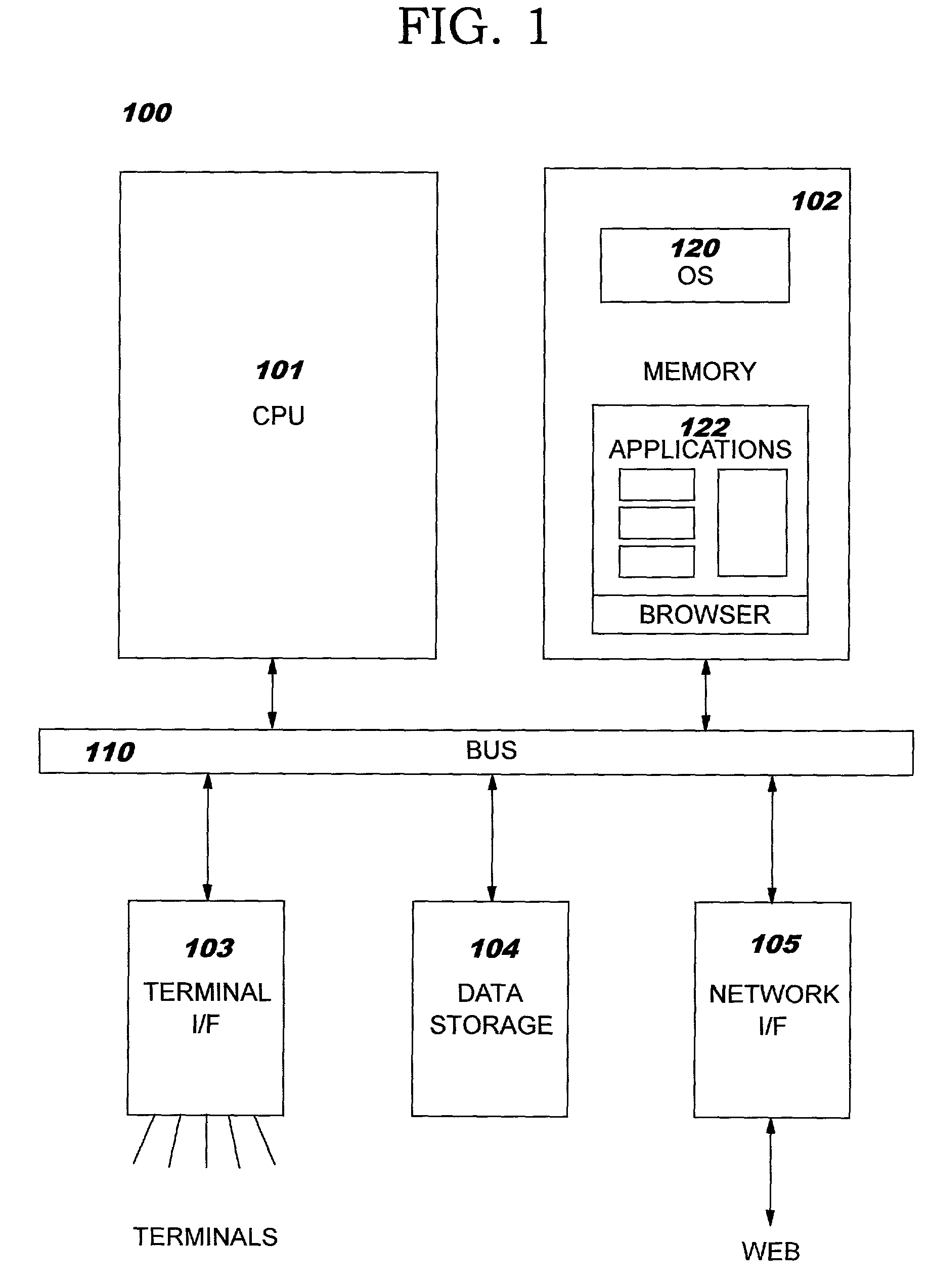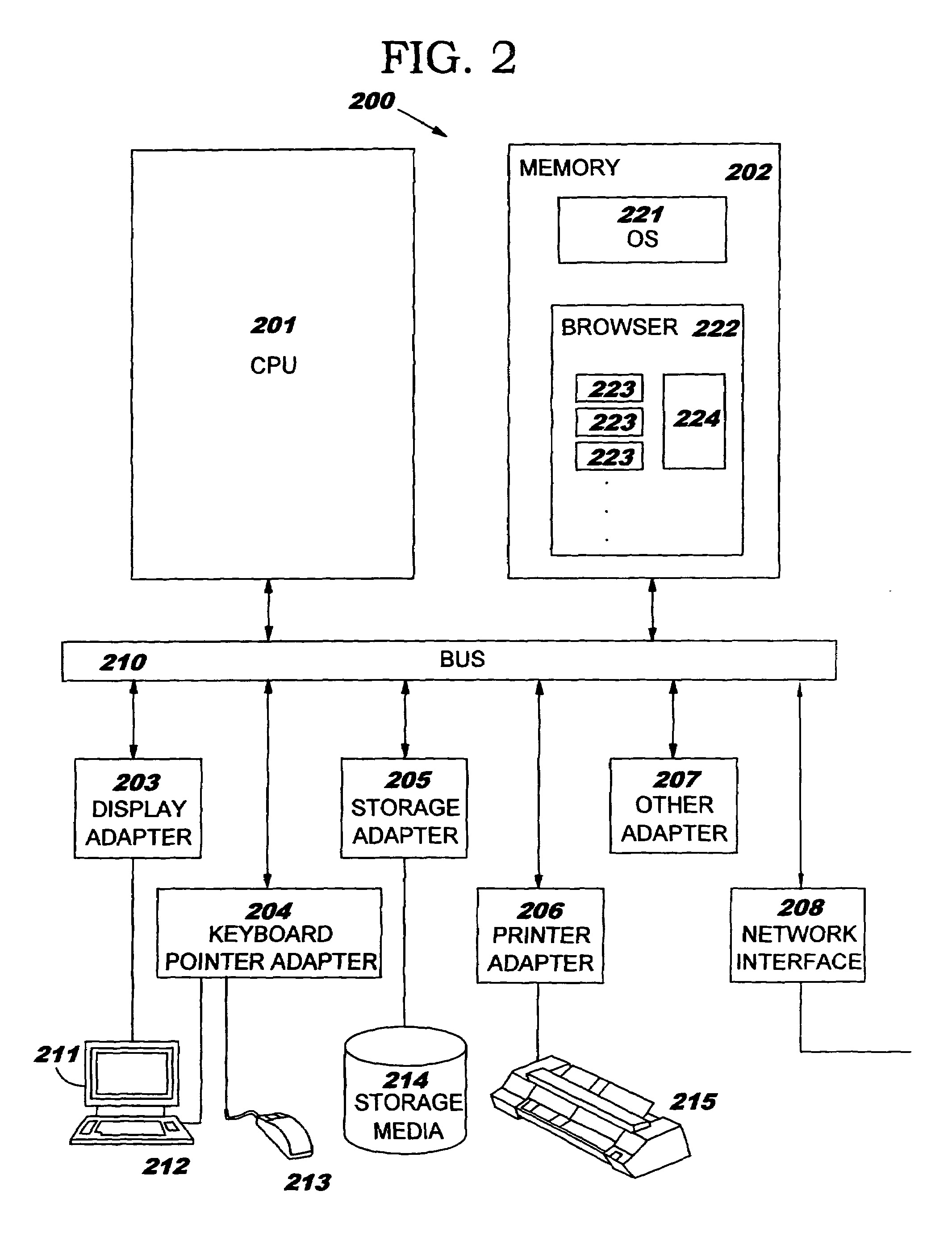Accessing legacy applications from the Internet
a legacy application and internet access technology, applied in the field of accessing legacy application programs over, can solve the problems of difficult decisions about the future of such applications, the inability to adapt to change easily, and the inability to separate business logic from user interface logic, etc., to achieve the effect of minimal intervention and testing, and the ability to deploy legacy applications onto the web
- Summary
- Abstract
- Description
- Claims
- Application Information
AI Technical Summary
Benefits of technology
Problems solved by technology
Method used
Image
Examples
Embodiment Construction
[0024]Referring to the Drawing, wherein like numbers denote like parts throughout the several views, FIG. 1 shows a high-level block diagram of a computer system 100, consistent with an embodiment of the invention. Computer system 100 may comprise central processing unit (CPU) 101, main memory 102, terminal interface 103, data storage 104, and a network, e.g., Internet, interface 105. The various devices communicate with each other via internal communications bus 110. CPU 101 is a general-purpose programmable processor, executing instructions stored in memory 102; while a single CPU is shown in FIG. 1, it should be understood that computer systems having multiple CPUs could be used. Memory 102 is a random-access semiconductor memory for storing data and programs; memory is shown conceptually as a single monolithic entity but it is well known that memory is often arranged in a hierarchy of caches and other memory devices. Operating system 120 and applications 122 reside in memory 102...
PUM
 Login to View More
Login to View More Abstract
Description
Claims
Application Information
 Login to View More
Login to View More - R&D
- Intellectual Property
- Life Sciences
- Materials
- Tech Scout
- Unparalleled Data Quality
- Higher Quality Content
- 60% Fewer Hallucinations
Browse by: Latest US Patents, China's latest patents, Technical Efficacy Thesaurus, Application Domain, Technology Topic, Popular Technical Reports.
© 2025 PatSnap. All rights reserved.Legal|Privacy policy|Modern Slavery Act Transparency Statement|Sitemap|About US| Contact US: help@patsnap.com



